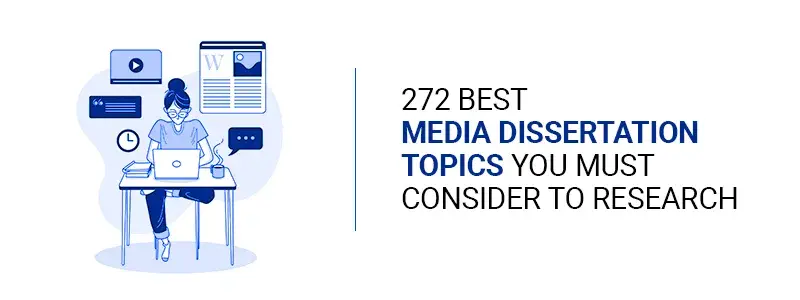Principles of Management Management Theories
Question :
One best management theory that can be considered in the current business world
Answer :
Management theories are developed and being used in the management of the organizations in recent years on a higher level since the management plays the main role in the business. The management theories are used for various purposes ranging from decision making, allotting resources, and motivating the workers. Both the old and new theories are into use in the current business world. The different types of management theories that are incorporated in the modern business environment are behavioral management theory, modern management theory, and classical management theory. However, the implementation of the management theory is not easy in recent times.
Reportedly, each of the workers responds differently to the same management tactics. In recent years, workers from different backgrounds are being deployed and equality has been the main focus for global organizations. Managers who adopt similar philosophies or management tactics to yield positive results have not been successful since it is challenging to identify the best tactics that are suitable for all the humans in common. It was identified that the best managers tend to use several management theories to deal with a different set of people (Kaufman, 2001). This has enabled the managers to motivate the workers to provide error-free performance. From the above information, it is clear that the organizations in the current business environment cannot deploy one best management theory since it may not be suitable for the workers from various backgrounds who are employed in a cross-cultured environment.
Administrative Management Theory enables to design the entire organization effectively. Various aspects that are focused on this theory are the clear division of labor, delegation of power, authority to administrators, and formalized administrative structure (Terry, 1998). This theory insists on the organization in adopting the formalized structure or the hierarchical structure. For instance, the CEO of the organization will give instructions to the top managers who would be directing the middle and lower managers.
One best management theory that can be considered in the current business world
The managers tend to identify the best management toolkit that could best suit the organization in the current business world. This toolkit is being prepared from the historical experiences of each theory. Reportedly, Frederick Taylor’s Scientific Management theory (1856-1915) is being deployed in most of the organizations. This theory insisted on specialization and standardization (Taneja et al, 2011). It enabled to the breakdown of the huge process into multiple steps. The managers could assign the work depending upon the skills of the workers and could also train them depending on the type of task that is to be allocated to the workers. This could increase the efficiency of the workers. However, this theory failed to consider the humanity or emotional part of the workers. It just focused on the completion of the given task. Due to this reason, the exact nature of the theory is neither being used nor considered. The workplace efficiency and training procedures were enriched with this theory implementation. Scientific management theory focuses on the specialization of the functions. The organizations in the United States had adopted this theory to planning the process by considering a normal workflow (Bell & Martin, 2012). However, planning and executing the work simultaneously is tedious in the current workplace since the flow of work may not be predictable. This part needs to be addressed and planned accurately by the management. Furthermore, this theory allows the management to plan the wages either per day or across the role or position of the workers. Irrespective of the inputs given by the workers, they would be paid the same. This may lower the satisfaction and productivity of the workers which may in-turn affects the overall performance of the organizations. In recent years, the organizations have preferred to pick a range in the salary to increase productivity (Su, 2017). Critically examining the above statements, it can be said that the organizations cannot apply this scientific management theory alone due to its nature that may not be suitable for the firms irrespective of its advantages such as enriching the work efficiency to survive in the current dynamic business environment as it has ignored several attributes such as emotions of the workers and alignment of plan & execution of tasks.
Administrative management theory which was proposed by Fayol, Mooney, and Gulick had mainly focused on the delegation of power, clear division of labor, and formalized administrative structure. The design of an entire organization could be planned using the administrative management theory. The theory insists the companies make use of a formalized administrative structure or hierarchical structure. The workers were divided clearly across different departments. The CEO had the main power to make final decisions and gave instructions to top-level management. The top managers had supervised lower management and middle layer management (Taylor, 2020). Reportedly, the larger organizations have been shifting from the traditional hierarchy of nature to the team approach. Despite, the clear communication and the clarity in the goals fixed for the organization, the hierarchical organizational structure is not preferred mainly because the decisions are made slowly. Since, the higher officials have only empowered the ability of the firm to react to the changes and the day to day operations could be affected. To grow the business in recent years, it is imperative to develop the capability to make decisions related to daily operations as per the conditions prevailing in the external dynamic market. The above authors have indicated that the organizations could use the divisional layout for clear communication and organizational purpose. However, the centralized structure may be very rigid which may hamper the capability of the large firms to change according to the external environment. Thus, adopting this single theory could be difficult.
The bureaucratic approach of management has been adopted by various organizations in the public sector, non-government institutions, and large corporations in the current modern world. Most of the organizations have become an example for the Weber model related to bureaucracy. For instance, Walmart has adopted the bureaucratic approach. This had enabled the organization to align the satisfaction of the customers with that of the satisfaction of employees. The thought-process of the top layer management could be changed using this approach. The goals of the organization could be accomplished with ease since this approach instills freedom in the decision-making process. On the other hand, theorists also indicate that the demand for the time and resources on a higher scale. It was also found that proficient workers or managers are promoted only until they are competent. If they fail to meet the demand of the organizations no recognition or promotion is given to them. Constant modification of rules and the additional workload have also caused issues for the workers. In accordance with the Weber's approach of bureaucracy the work environment completely relies on impersonal and highly professional environment. However, the distribution of power, uniformity and efficiency of the candidates the organizations have been able to yield more profit with the implementation of this approach. Thereby, it can be understood that the democratic approach enables the large scale organizations to align the goals of the organizations with that of the personal objectives of the employees. The distribution of the power may reduce the rigidity of the organization and thus can improve its capability to remain flexible in accordance to the external environment.
Planning is an important aspect in the management of the organizations. In recent years, the organizations have used the combination of top-down and bottom-up approach as it enables to identify the key goals of the organization. The best approach is often chosen based on the resources and the nature of the organization. With a high level of coordination the bidirectional planning (top-down and bottom up are used). The top-down approach reduces the complexity in planning and while the bottom-up approach increases the involvement of the employees in various operations. Thus, it increases the efficiency of the overall organization. Therefore, the combination of the two models could enable the organization to fix the right goals as per the external condition and could increase the internal efficiency as well.
Conclusion
It can be summarized that each of the management theory has both merits and demerits. For instance, the companies that adopt administrative theory may find it very difficult to increase its flexibility in accordance to the external environment and however, the division of employees amidst various departments may increase the clarity in the communication. Even-though the scientific theory may increase the work efficiency due to the task allocated as per the talent of workers, it may not fulfill the emotional needs of the workers. From the above information, it can be concluded that the bureaucratic approach could be suitable for all the firms and however, it demands high investment for time and resources. It cannot be applied by small scale firms. Thus, the organizations have applied the combination of management models.
References
Su, Y. (2017). Taylor Scientific Management Theory Carding and Significance of Organization Management. Social Sciences, 6(4), 102. doi: 10.11648/j.ss.20170604.12
Taylor, F. (2020). The Principles of Scientific Management. London: Cosimo Classics.
Taneja, S., Pryor, M. G., & Toombs, L. A. (2011). Frederick W. Taylor's scientific management principles: Relevance and validity. Journal of Applied Management and Entrepreneurship, 16(3), 60.
Kaufman, B. E. (2001). The theory and practice of strategic HRM and participative management: Antecedents in early industrial relations. Human resource management review, 11(4), 505-533.
Terry, L. D. (1998). Administrative leadership, neo-managerialism, and the public management movement. Public Administration Review, 194-200.
Bell, R., & Martin, J. (2012). The relevance of scientific management and equity theory in everyday managerial communication situations. Journal of Management Policy and Practice, 13(3).
Dionne, S. D., Yammarino, F. J., Atwater, L. E., & Spangler, W. D. (2004). Transformational leadership and team performance. Journal of organizational change management, 17(2), 177-







